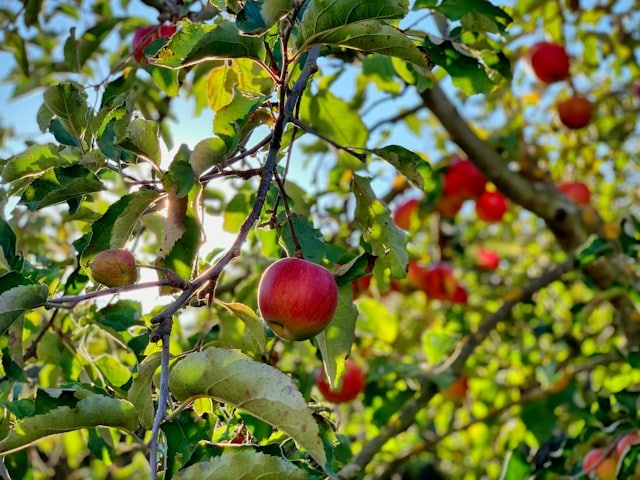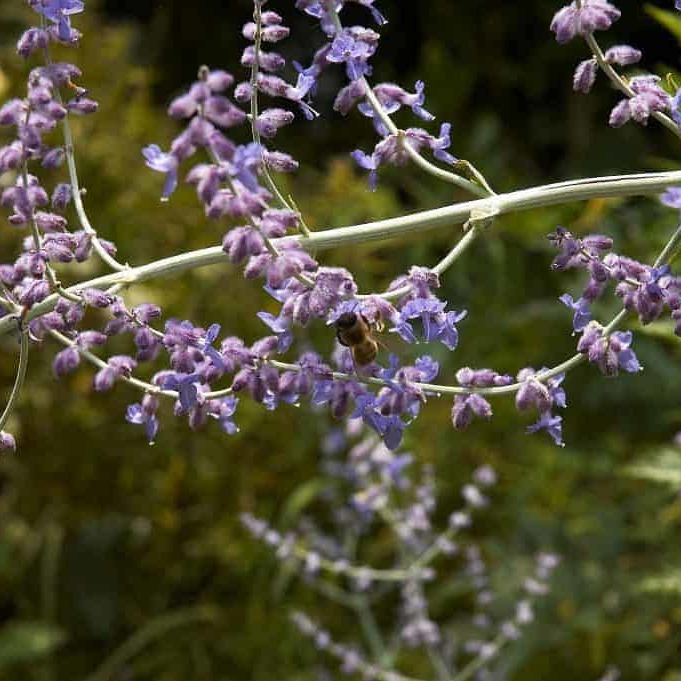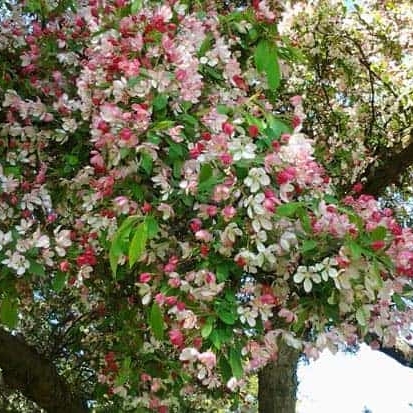The Great Winter Hack: Does My Apple Tree Really Need Pruning?

It’s that time again: frosty mornings, crunchy leaves underfoot, and the annual chorus of gardening advice urging you to grab your loppers, saws and secateurs and wade in for some apple tree pruning. But hold on a sec, fruit fanciers! Before you embark on this arboreal assault, let’s delve into the myth, mystery, and maybe even madness of winter pruning. I worked pruning apples in the huge RHS Wisley Orchard, with over 700 varieties over 2000 trees. Here’s a few things I learned.
Firstly, the myth: Pruning automatically equals a bountiful harvest. Sure, removing diseased or overcrowded branches can be beneficial. But excessive hacking can actually reduce fruit production. Why? Because you’re essentially snipping off potential blossom-bearing wood! Remember, an apple tree’s not a bonsai; it thrives on a certain wildness.
In commercial orchards, apples are pruned in specific ways to achieve a range of goals, such as;
- Help create fewer but larger fruit, by reducing the number of fruiting buds
- Maintain an open airy structure in which light and air can ripen the fruit and prevent disease
- Keep consistent crop levels from year-to-year, avoiding boom and bust years
- Maintain an easily maintainable and harvestable shape – not too tall or dense
However, your private garden is not a commercial operation. If your tree produces enough quality fruit without pruning, feel free to leave it be. You don’t even need to harvest it – the birds and butterflies will love the fallen fermenting fruit, and the dangling winter apples can be beautifully ornamental, like crab apples.
Secondly, the mystery: Why winter? Traditionalists claim it promotes new growth and prevents sap loss. However, studies suggest summer pruning can be equally effective, especially for younger trees. Plus, you can actually see what you’re doing with leaves on the branches, avoiding accidental cuts to healthy limbs.
Finally, the madness: The blind adherence to the “one size fits all” approach. Different apple varieties, ages, and climates have unique pruning needs. What works for your neighbour’s Granny Smith might cripple your Cox’s Orange Pippin. Do your research, folks! If you want to identify your apple variety, find your local fruit growing group such as the Northern Fruit Group, and bring them a few apples. They may be able to tell you what you’ve got, which will then unlock advice on how best to prune it, if you want to.
So, should you prune your apple tree this winter? It depends. If it’s overcrowded, diseased, or a giant unruly beast, a light touch might be helpful. Old wisdom has gardeners making thousands of little snips all over the tree with secateurs, but current best practice now suggests it is better to make fewer cuts, choosing larger branches and sawing them off at the base just shy of the branch collar. The collar is the little fold of bark at the base of the branch. First cut a rough cut about 15-30cm away, and then once the weight is taken off, do a nice final cut just flush with the collar but not damaging it. The collar is the place where healing tissue will grow over to seal the wound.
Never remove more than a third of the whole canopy in one year. Don’t be afraid to experiment with summer pruning, especially if you want to reduce the size. Big reductions should take place slowly over multiple years, to avoid shocking the tree into producing huge whippy ‘water shoots’.
If you want to do good for wildlife, leave dead wood in the tree. You can even strip or ring-bark branches so they become ‘standing dead’. This dead wood habitat is hugely valuable.
Ultimately, your apple tree deserves respect, not ruthless reduction. Treat it as a living being, not a topiary project. Observe, understand, and prune with a gentle hand. You might just be surprised at the delicious rewards in return.
Photo by Liana Mikah on Unsplash
Originally published February 2024
Owen Hayman
Owen joined the Bestall & Co planting and aftercare team in spring 2019. He is an RHS qualified horticulturist, holding a full Level 3 Diploma in Horticulture, and recently came in the top 3 at the Northern Regional Final of The Young Horticulturist of the Year 2019. After first doing a foundation diploma in Fine Art, he went on to gain a degree and masters in Plant and Soil Science from the University of Sheffield in 2014. Owen worked as a researcher on various field research projects in Alaska, Panama and Borneo. When not away in the field, he became obsessed with visiting gardens and nurseries across the British Isles and the Netherlands, developing his own garden, and then taking on a walled allotment garden as a personal project. He realised his true passion was in horticulture, and so moved away from academia and into the world of specialist plant nurseries and professional gardening.
Owen is now studying the Wisley Diploma, but continues to write articles for us on a monthly basis, and we're delighted to maintain contact with such a passionate and knowledgable plantsman.



